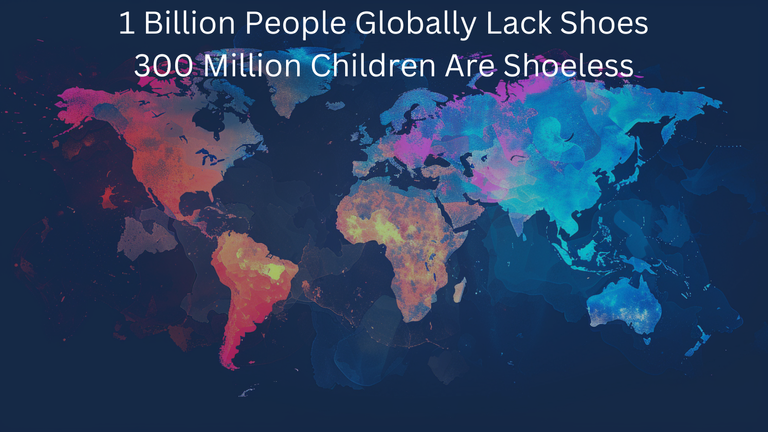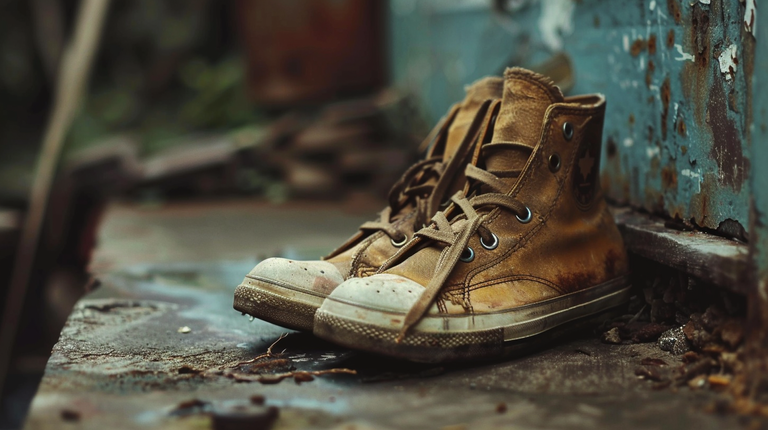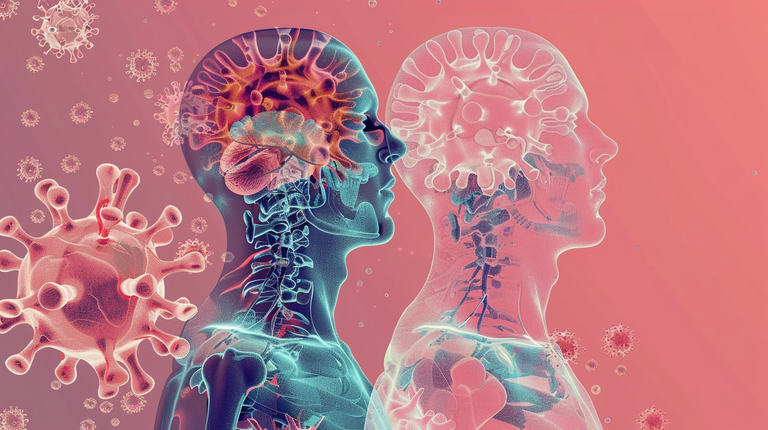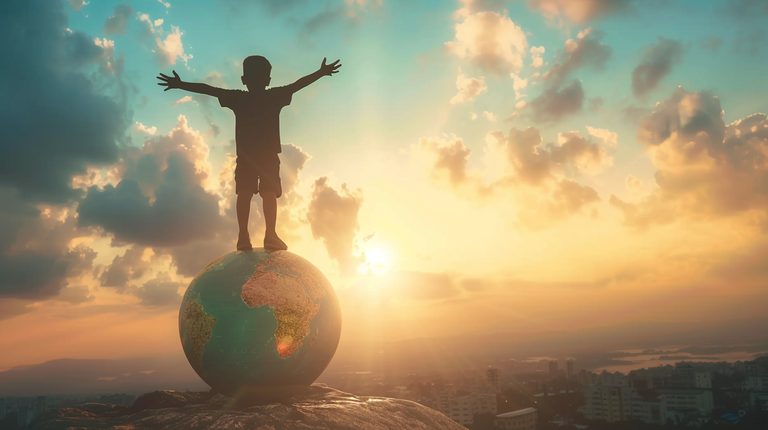Global Impact of Footwear Poverty

- A Billion People Globally Don't Own a Pair of Shoes
- 300 Million of Them Are Children
- Footwear Poverty Also Affects Many Underprivileged Children in the United States
- A Major Challenge in Poverty and Child Welfare
Here are some of my sources for this post
UNICEF
Global Health Council
Shoes That Fit
World Health Organization
Education Above All
Save the Children
Global Partnership for Education
Samaritan’s Feet
World Bank Education
TOMS Impact
Soles4Souls
UNESCO Reports
WHO Soil-transmitted Helminth Infections
Imagine Life Without a Pair of Shoes

It's hard to imagine life without a pair of shoes. However, for over a billion people globally, this is their reality. 300 million of them are children. Footwear poverty is a significant issue that not only affects individuals in developing countries but also impacts underprivileged children right here in the United States.
"One Day Without Shoes" is a campaign started by TOMS Shoes with the mission to highlight the impact that a pair of shoes can have on a child's life. The event encourages people to go barefoot for one day to symbolize the struggles faced by children without shoes and raise awareness about health, education, and economic opportunities that could be afforded by having shoes.
The movement has become a global phenomenon. It is not just about awareness but also a call to action against childhood poverty and inequality.
The Importance of Shoes
The Importance of Shoes Shoes are often taken for granted, but they play a pivotal role in the health, education, and economic stability of children worldwide. Beyond their basic function of protecting feet, shoes act as a primary barrier against debilitating parasitic soil-transmitted diseases such as hookworm, ascariasis, and whipworm. These parasites penetrate the skin of bare feet, leading to infections that can cause anemia and malnutrition, severely affecting a child’s health and development. The World Health Organization reports that over 1.5 billion people worldwide are affected by soil-transmitted health infections, a burden that could be significantly reduced by simply wearing shoes.
Long-Term Health Risks

The lack of shoes can lead to not only short-term infections but also long-lasting physical issues. For instance, repeated hookworm infections may result in chronic anemia and protein deficiency, hindering growth and cognitive development. This reduces children’s chances of a successful future, keeping them trapped in poverty. Barefoot children are also more vulnerable to cuts, sores, and infections from dirty soil, which can lead to serious complications if not treated correctly. In tropical and subtropical climates where these diseases are most prevalent, these wounds can lead to more severe infections like tetanus or cellulitis, posing life-threatening risks without medical help. The simple act of wearing shoes could drastically reduce the incidence of these infections.
Educational Barriers
Not having shoes is also a barrier to education since most schools require children to wear shoes to attend classes. Without shoes, children miss out on education and socialization. Statistics show that in sub-Saharan Africa, for instance, school attendance can increase by as much as 62% when children are provided with shoes. Lack of education due to barriers like inadequate footwear perpetuates cycles of poverty. Having shoes is not only important for health, learning, and economic development, but it also costs the global economy trillions of dollars each year. Societal Ripple Effect Having footwear improves children’s health, school attendance, and ability to contribute to their families and communities.
To learn more about how shoes impact child health and development, visit the following:
Cultural and Institutional Norms
In parts of Latin America and Asia, wearing shoes is a sign of respect and readiness to learn, embedding deeper cultural values into educational norms. These requirements, while well-intentioned, can inadvertently exclude financially disadvantaged children who cannot afford shoes. This exclusion not only affects their current educational access but also their future opportunities and economic mobility.
Impact on Future Independence
The correlation between education and future economic independence is well-established. Education opens doors to better job prospects, higher earnings, and an improved quality of life. When children miss out on education due to something as basic as not having shoes, their potential economic independence is severely compromised. Studies indicate that each additional year of schooling can increase a person's earnings by up to 10%, and those with higher education levels are more likely to escape the vicious cycle of poverty.
Ensuring children can attend school through basic provisions, such as having footwear, significantly impacts their ability to contribute economically in the future. Ensuring that every child can attend school by addressing the shoe requirement barrier is a critical step towards global educational equity.
For more insights into the impact of educational barriers and how to help, consider visiting educational resources such as Education Above All and Save the Children.
The Ripple Effect on Communities

The Ripple Effect on Communities The impact of uneducated segments of the population extends beyond individual economic prospects to affect entire communities. Lack of education leads to higher rates of unemployment and dependence on social welfare systems, straining public resources. This can lead to increased crime rates, lower community health standards, and decreased social cohesion. Communities with higher rates of education have better economic resilience, more robust civic engagement, more effective governance, and are better equipped to adapt to economic downturns. They are also more likely to foster environments that attract business investments, creating cycles of positive growth and community development.
Addressing the lack of basic necessities like shoes is more than a matter of public health or education—it's an economic imperative. By investing in the needs of the youngest members of society, we can foster a healthier, more educated workforce that will drive future economic growth and societal well-being. For further exploration of the economic implications of education and how you can contribute to solutions, visit the Global Partnership for Education.
Race, Economic Status, and Gender
Race and socioeconomic status are closely linked to the lack of shoes. In many developing countries, minority and indigenous populations often face greater socio-economic challenges and have higher rates of being shoeless. These groups are typically marginalized and have decreased access to resources such as education and healthcare, perpetuating the cycle of poverty and deprivation.
Gender Disparities: Gender disparities also play a role. In many cultures, when choices must be made due to financial constraints, boys are more likely to receive shoes and attend school than girls, who are then left behind. This not only affects the educational and health outcomes of girls but also limits their future economic opportunities.
UNICEF reports show that empowering girls with basic educational resources like shoes can significantly alter their life trajectories, reducing rates of child marriage and increasing their potential earnings. For more detailed demographic data and to learn how you can help address these disparities, visit organizations like Save the Children and Soles4Souls.
Consequences of Inaction
If the world doesn't help children who don't have basic things like shoes, the long-term consequences will be severe and far-reaching. Without help, not having shoes will make it hard for kids to go to school and stay healthy, keeping them stuck in poverty. This leads to more expensive healthcare, lower productivity, and slower economic growth. Poor communities with limited education have more crime, less involvement in society, and rely more on government aid.
Global Call to Action

Failure to act doesn't just affect local areas, but can have worldwide consequences. Poverty in one place can impact economies and societies globally due to increased connections. It's important to help vulnerable groups, such as children without shoes, not only because it's the right thing to do, but because it's important for global stability and prosperity.
How to Help
"One Day Without Shoes Day" is not just about raising awareness; it's a way for people to make a difference in a worldwide movement. Here’s how you can participate and make a difference:
- Go Barefoot: Participate by going barefoot for the day to get a glimpse into the challenges faced by those without shoes.
- Spread the Word: Use social media to raise awareness by sharing your barefoot experience and posting facts about shoelessness.
- Organize or Attend Events: Look for local events like walks or runs supporting the cause. If there are none, consider organizing one with the help of schools, churches, or community centers.
Support Year-Round Efforts
Participation doesn't have to be limited to just one day. Here are other ways you can help throughout the year:
- Donate: Give new or gently used shoes or money to help organizations.
- Volunteer: Help distribute shoes locally or internationally.
- Advocacy: Speak up for children's education and needs by writing to officials or supporting poverty reduction laws.
Organizations to Support
Here are a few organizations that are making significant impacts and which you can support:
1. TOMS Shoes: Donates shoes and raises awareness about global health and education challenges.
2. Soles4Souls: Collects and distributes shoes and clothing worldwide to support economic development.
3. Samaritan’s Feet: Aims to provide shoes for all children. Support them through volunteering or donations.
4. Shoes That Fit: Ensures children in need in America receive new athletic shoes for school, promoting dignity and joy in learning and play.
Conclusion
As we have explored, "One Day Without Shoes Day" is more than a symbolic gesture; it is a call to action that highlights the crucial role shoes play in promoting health, education, and economic opportunities for children worldwide. By taking part in this event or backing ongoing efforts, each of us can make a significant impact on the lives of children who encounter daily challenges because of the absence of basic necessities. Key Points Recap:
Key Points Recap:
- Health Implications: Shoes are crucial for preventing diseases and protecting children's health.
- Educational Barriers: Shoes are often a requirement for school uniforms, and their absence can hinder children from attending school.
- Economic and Societal Costs: The lack of shoes leads to educational setbacks, impacting long-term economic development and societal well-being.
- Demographics Affected: Children in impoverished regions, especially in sub-Saharan Africa, Asia, and Latin America, are the most affected.
- Global Efforts: Several organizations are committed to providing shoes to those in need to address these challenges.
Call to Action: I encourage you to get involved with this cause. Whether through donations, volunteering, advocacy, or simply by participating in "One Day Without Shoes Day," your actions can create ripples of change. Remember, the journey to a better world begins with a single step, or in this case, by taking off your shoes.
References and Further Reading

Here are some key references and further reading suggestions to help you delve deeper into the topic and perhaps inspire you to take action:
World Health Organization (WHO): For statistics on the health implications of being shoeless.
● Visit: WHO Soil-transmitted Helminth Infections
UNESCO Global Education Monitoring Report: For insights into educational barriers and the importance of school attendance.
● Visit: UNESCO Reports
World Bank: For analysis on the economic impact of education and poverty.
● Visit: World Bank Education
TOMS Shoes: Learn more about the "One for One" initiative and other ways they are helping communities.
● Visit: TOMS Impact
Soles4Souls: Explore how donated shoes are helping people step out of poverty.
● Visit: Soles4Souls
Samaritan’s Feet: Discover the global impact of providing shoes to those in need.
● Visit: Samaritan's Feet
These resources are excellent starting points for anyone looking to understand more about the impact of being shoeless and how to help. Whether you're a student, educator, activist, or simply a concerned citizen, your involvement can lead to meaningful change. Let's walk together towards a future where every child can step into their potential, one pair of shoes at a time. Thank you for taking the time to read this.
Images: Canva, Midjourney. I hold commercial licenses.
#Kindness #cwh #causes #Health #Education #OneDayWithoutShoes #BarefootChallenge
I’m stunned at the extent of this data. Or perhaps I was overlooking what was clearly there hiding in plain sight.
Good on you for continuing to post despite the unhelpful feedback this week. I believe Hive is like the stage. One can take it or sit in the audience. But no one receives flowers 💐 for sitting in the audience.
Much love, sweet friend!
A 💖
Ps to celebrate your brave new post, I will today go to the Leeds Kirkgate Market and get one of the two kinds of Yorkies on offer at Brown’s Sweet Shoppe. 🍫
Fantastic, I expect to see a picture of a reaction video LOL!
Hello.
There is reasonable evidence that this article is machine-generated.
We would appreciate it if you could avoid publishing AI-generated content (full or partial texts, art, etc.).
Thank you.
Guide: AI-Generated Content = Not Original Content
If you believe this comment is in error, please contact us in #appeals in Discord.